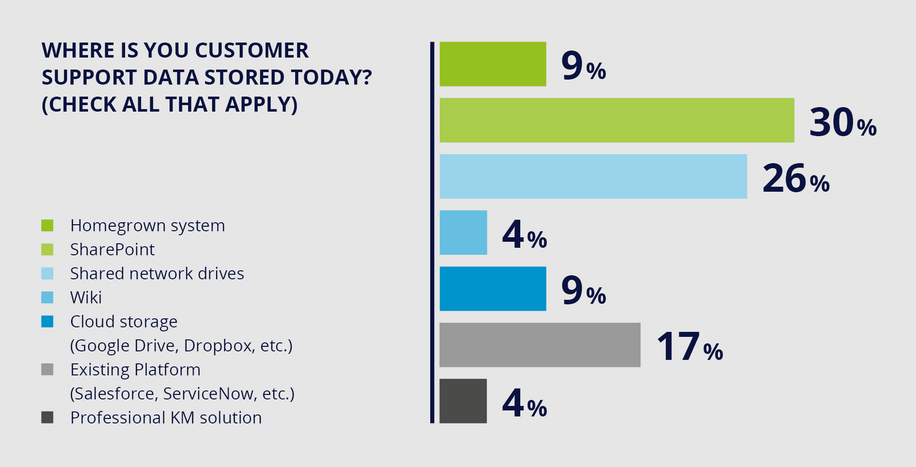By
Chris Rall
|
Date Published: October 14, 2020 - Last Updated October 15, 2020
|
Comments
 Average handling time is one of the most common and longstanding metrics used in call centers. Unlike terms such as customer experience, AHT is easy to calculate, easy to understand and explain, and a metric everyone is comfortable with. That’s why it needs to go as an agent-facing metric, and perhaps all together.
Average handling time is one of the most common and longstanding metrics used in call centers. Unlike terms such as customer experience, AHT is easy to calculate, easy to understand and explain, and a metric everyone is comfortable with. That’s why it needs to go as an agent-facing metric, and perhaps all together.
What is AHT?
Handling time measures how long a phone interaction lasts from when the customer begins the call to when they hang up. That includes wait time, hold time, and all-talk time.
Simply put, it measures the average time of phone calls with customers.
Why we love AHT
AHT measures a clear delineated action that everyone can understand (talking on the phone) and is easy to understand. There are no complex calculations or sum of different interactions.
In contrast to many business metrics, the methodology behind handling time is as simple as adding a list of numbers and then calculating the average. That makes it easy to reproduce and check.
Next, management loves numbers. A hard metric like AHT is useful versus softer ones like CX and even CSAT or NPS which measure sentiment and feelings. Many contact centers are measuring cost per call or abandonment rate, which AHT directly impacts, therefore reinforcing its importance.
Finally, we love AHT because it is based on the false assumption that the length of a call is always related to the quality of the service.
Now, I’m not going to say that there’s not something wrong if agents are on the phone for an hour with the same person. The better measure here is FCR (First Contact Resolution). Customer service is about delivering solutions and only indirectly about the time.
What drives long handling times?
Long AHT is a never-ending challenge whose root causes are often overlooked or unknown. These include:
- Incomplete forecasting & planning
- No knowledge base or single source of truth
- Too much multitasking (e.g. chat + email)
- Lack of self-service options
- Implicit emphasis on AHT via e.g. leaderboards
To the right is an example from a poll we conducted this August. What do you think the effect on AHT is for agents who have to search a variety of legacy systems to find answers? This is a knowledge management problem.
Average Handling Time is (Mostly) Irrelevant
Let’s face it. There will always be problems and customers will always want to speak with someone. Customers want a solution to their problem, and to feel like they’re taken seriously and the focus of the call. If that takes 2 minutes or 10, does it really matter?
Yes, contact centers need to monitor service, quality and efficiency metrics in order to judge whether they are meeting their business goals but let’s start with why AHT should be retired:
- Phone calls are no longer the primary channel
- Call time does not equal or indicate quality
- Focusing on numbers over people harms quality
While phone calls are often still the largest channel by percentage, that is rapidly changing. How do you measure the AHT of an email thread? What about asynchronous chat like WhatsApp or Facebook messenger? Sure, people are doing it, but does it even make sense? For chat and email we’re more interested in time to first reply in most cases.
To be fair, only about ⅓ of contact centers still use AHT as an agent-facing metric as we discussed in our webinar with Jeff Toister on reducing handling time. Nevertheless, legacy metrics like AHT remain stubbornly ingrained in many contact centers whether explicitly or implicitly.
Call Time Does Not Equal Quality
At the risk of stating the obvious, handling time only tells us what the average call time is. That’s it. It gives absolutely no additional information about the customer’s issue, the quality of the service, whether or not the problem was resolved satisfactorily, and whether the customer was happy about the interaction. Anyone reading more into AHT than the factual amount of time calls take on average is making assumptions.
Time to Kill Off AHT
At best, AHT is a vanity metric that, as Tim Ferris puts it, is “good for feeling awesome, bad for action.” At worse, it’s a distraction from the real issues that may be leading to higher cost per call and dissatisfied customers.